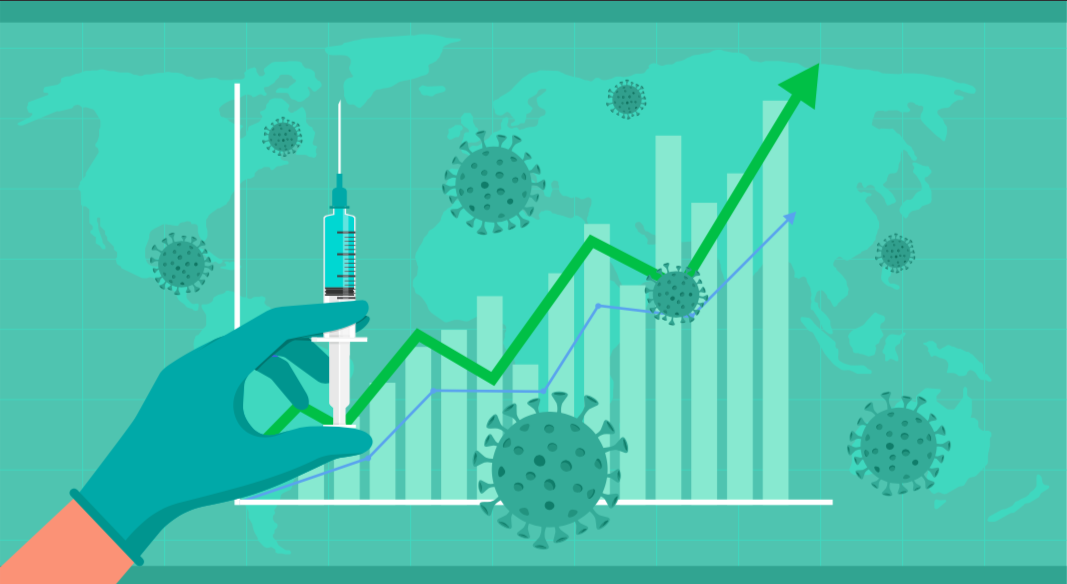We are living through an unprecedented period of human life and development, pushed by a global health crisis to shelter indoors against a viral respiratory disease that has already taken millions of lives. This is a loss of life we have not had the opportunity to eulogise.
The ongoing worldwide pandemic, although unbearably tragic, has brought about developments such as vaccinations and mRNA technologies that could hasten our return to ‘social’ life, and potentially eradicate pre-existent diseases.
On 31 December 2019, an outbreak of pneumonia in Wuhan, China, was traced to a novel strain of coronavirus, which was provisionally termed 2019-nCoV by the World Health Organization, before being renamed SARS-Cov-2 by the International Committee on Taxonomy of Viruses. The final day of 2019, unbeknownst to most of us, would be a date affixed to history books only now being written, in the course of a global situation that affects us all and is ongoing. As of 20 March 2021 there have been at least 2,877,797 confirmed deaths and more than 131,342,071 confirmed cases in the COVID-19 Pandemic. Staggeringly high figures we cannot begin to comprehend, and which we often see abbreviated to more palpable figures, like 2.7 million, or a few thousand confirmed cases in the 7-day-period.
The ongoing worldwide pandemic, although unbearably tragic, has brought about developments such as vaccinations and mRNA technologies that could hasten our return to ‘social’ life, and potentially eradicate pre-existent diseases. Systems like social distancing, wearing masks, and track-and-trace have all been implemented to varying degrees in all the nations of the world, but I am speaking of course about the SARS-Cov-2 vaccine, the one measure which may prove to usher humanity into the post-pandemic age.
Having previously gained knowledge of the structure and function of the coronavirus from the severe acute respiratory syndrome (SARS) and Middle East respiratory syndrome (MERS), scientists were well prepared to develop a vaccination against the novel coronavirus. In turn, merely 10 days after its initial identification, the SARS-CoV-2 genetic sequence was shared through GISAID, a global science initiative providing open-access genomic data on influenza viruses. It was the globalized, transparent, open-access nature of the GISAID Initiative that facilitated the global pharmaceutical industry’s major commitment to tackling COVID-19.
Further, in February 2020 the World Health Organization says it did not expect a vaccine against the novel coronavirus SARS-CoV-2 to become available in less than 18 months. In turn, it is difficult to understate the medical miracle that was witnessed on the global scale, as hundreds of vaccine candidates were rushed to trial.
Amongst these candidates, some utilise traditional methods of conventional incubated vaccines (namely BBIBP-CorV, CoronaVac, Covaxin, and CoviVac). This traditional method is an ‘inactivated’ vaccine, wherein live pathogens are killed or inactivated, such that the body might produce the necessary antibodies in the case of a real infection. The other candidates include four viral vector vaccines (Sputnik V, the Oxford–AstraZeneca vaccine, Convidicea, and the Johnson & Johnson vaccine), two protein subunit vaccines (EpiVacCorona and RBD-Dimer), and two RNA vaccines, the Pfizer-BioNTech and Moderna vaccines. It is these last two which have proven such a tour de force for the biotechnology sector. Both the RNA vaccines have impressive efficacy rates of roughly 90-95%, demonstrated in a report by the CDC, and a highly accredited study published in the National Library of Medicine similarly found that the ‘mRNA-1273 vaccine showed 94.1% efficacy at preventing Covid-19 illness, including severe disease.’
Whilst Pfizer is a pre-established giant in the pharmaceutical industry, Moderna Inc. is a relative newcomer; despite only being founded in 2012 as a startup by stem cell biologist Derrick Rossi. Having garnered the interest of Harvard fellow Tim Springer and solicited the investment of venture capital firm Flagship Ventures, (whose CEO Noubar Afeyan bought 19.5%, with Flagship holding 18%), Moderna and AstraZeneca signed a five-year exclusive option agreement to develop and commercialize various therapeutic uses of mRNA technology in 2013. That same year, Rossi’s team reported research to improve heart function in mice, and having published research in Nature Biotechnology, Moderna received $110m from investors. Despite their initial success, the biotech company came under fire for lack of transparency, with a Feb 2016 Nature editorial summarising Moderna’s latest $450m funding round and criticising the new biotech company for not releasing peer-reviewed research and having no candidates, despite being valued at more than $5bn. Fast forward five years and Moderna is not only a serious contender on the big pharma scene but is also being touted as a major stock for investors. Today Moderna (MRNA) stock is trading at $136. (+1.22%), and investors will be anticipating earnings of $22.72 per share with a revenue of $16.8bn. Recent financial news from their website indicates a hugely optimistic overview. In late March, Moderna reported a further 7 Million doses of COVID-19 Vaccine for the Philippines and the 100 Millionth dose to the U.S. Government. 2021 sees a raise of the “lower end of global manufacturing plan for 2021 from 600 million doses to 700 million doses”, whilst “manufacturing is still working to supply up to 1 billion doses for 2021”. With a vision for expansion, Chief Executive Officer Stéphane Bancel plans to add Japan, South Korea, and Australia to the 8 commercial subsidiaries added in 2020. Based on the high demand from around the world for our COVID-19 vaccine and variant-based boosters, Modern is making new capital investments to increase capacity up to 1.4 billion doses in 2022.
As it stands, a total of 310 million doses ordered by the European Commission to date for delivery in 2021 and the European Commission has been granted conditional marketing authorization for an additional 150 million doses as required. Similarly, the United States has a committed order for 300 million doses with options to purchase an additional 200 million doses. Moreover, many other nations have ordered many million doses: Japan at 50m, Canada at 44m, Korea at 40m, and the UK at 17m.
Moderna, named affectionately after “modified RNA”, utilises novel biotechnology to implement virus protection in a noninvasive manner. mRNA is synthesized as a faithful copy of DNA code and then moves out of the nucleus to the cytoplasm of the cell. Here, the ribosomes (almost like little protein production factories) translate mRNA code into proteins, which in turn activate the real work of the cell and all of the chemical processes that comprise life. The process Moderna has perfected involves modifying mRNA by transfecting it into human cells and then differentiating it into bone marrow stem cells, a highly technical procedure involving numerous complex ingredients, DNA and mRNA production in specialised facilities, and combining mRNA and lipids into lipid nanoparticles (LNPs).
We might consider a cell’s DNA like a recipe, a list of instructions to make a DNA that carries out the cell’s function. Through transcription, mRNA forms a strand of nucleotides (the molecules which make up RNA and DNA) that match up with the nucleotides on the one side of a DNA helix. The RNA is carried into the cytoplasm where translation uses the mRNA’s decoded recipe to produce proteins. Moderna’s vaccine produces the custom-built mRNA which produces the COVID virus’ unique ‘spike protein’, the mechanism used to attach to and infect healthy cells. When the vaccine has been broken down, spike protein production halts, but your cells are primed with the specific antibody selection it needs to tackle a real viral threat in the future.
Last week it was reported that independent researchers published the putative (read: certain yet not legally permitted) sequences for Moderna mRNA vaccine on Github. Bert Hubert and the Stanford team had received permission from FDA to obtain leftover vaccine portions, so it would be technically possible to produce one’s own vaccination at home. The two researchers did not receive any objection from Moderna because not only is combining mRNA and liquid into lipid nanoparticles and extremely specialised task known by few, but every step is fraught with technical difficulty, such that even merely producing a vaccine would be next to impossible, let alone distribution! Despite the 4284 character-long ‘code’ of the BNT162b2 vaccine being freely available for oglers at Github, Moderna is confident no hackers will be biting off their profits any time soon. RNA is a tiny biological system that is utilised in infinite process at any given moment, so the future prospects for Moderna’s research goes far beyond the scope of merely COVID-19: it currently has 24 mRNA development programs in its portfolio with 13 having entered clinical studies! Moderna Inc. was named Fact Company’s Most Innovative Company for 2021, and in a company that last year hired only 1,200 people, developing a vaccine within 12 months is no easy feat. Moderna will see breakthroughs in therapeutic trials due simply to its sheer capacity for research, and its innovation, coupled with expanding production capacity sets it apart as one to watch.



